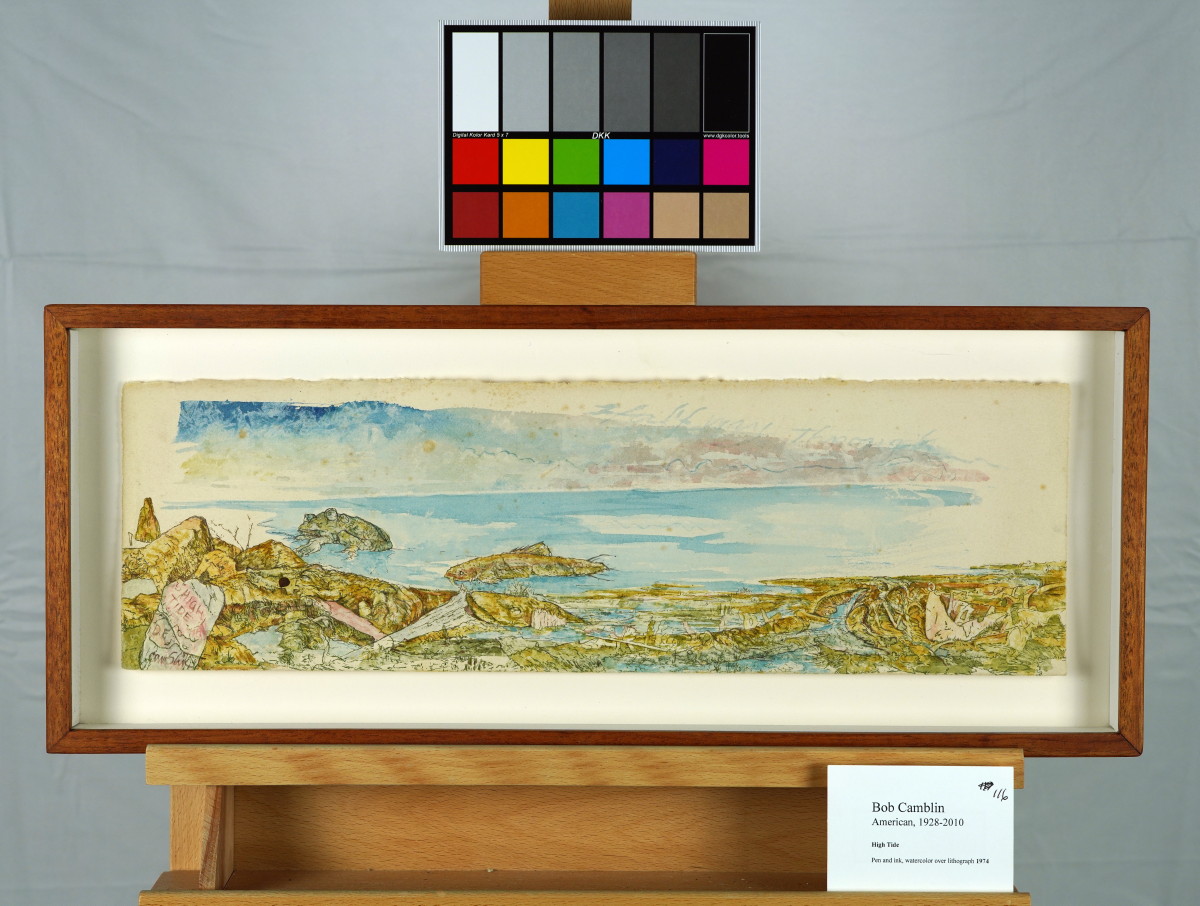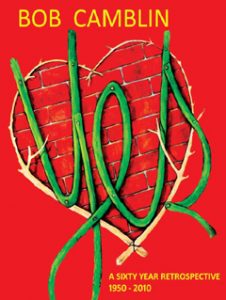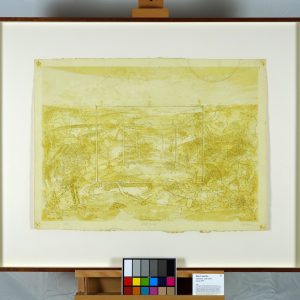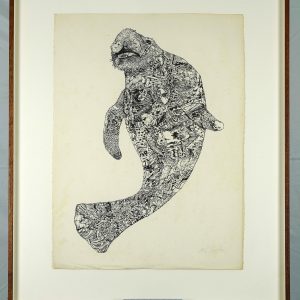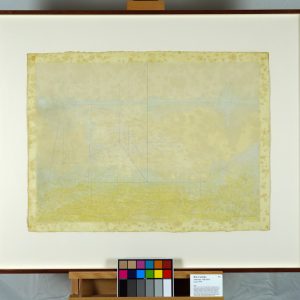Description
High Tide, 1975Lithograph AP Little Egypt Enterprises
Signed
6 x 21 in. (image)
9.34 x 24 x 2 in. (frame)
original, includes certificate of authenticity from ArtTrust
The lithograph “High Tide” portrays a surreal coastal landscape. The composition features a wide expanse of land with rough, rocky terrain in the foreground that extends into the calm waters of a sea or lake. Scattered rocks and abstract shapes suggest elements of decay or erosion, while hints of fish and other aquatic motifs blend into the setting. The colors shift from earthy tones of brown and green in the foreground to softer blues and pinks in the sky and water, giving the piece a dreamlike quality. Messages for the viewer are scattered along the shore line.
The scene’s emptiness and open space evoke the Zen concept of mu (emptiness) and wabi-sabi (beauty in imperfection). The landscape’s desolate atmosphere invites contemplation of the impermanent nature of the world, a central tenet of Zen. The fish, seemingly out of water, suggest the struggle of human life when removed from its natural flow. Yet, the surrounding calm hints at acceptance and peace in embracing the transience of all things.
The image resonates with Hexagram 59, Huan (Dispersion or Dissolution), which signifies the need for inner clarity and the breaking down of barriers. The open space between the rocks and water can symbolize the dispersing of obstacles or ego, allowing one to return to a state of harmony. The interplay of elements like earth and water further aligns with the I Ching’s emphasis on finding balance in shifting circumstances.
Bringing these perspectives together, the artwork suggests a place where nature’s raw elements meet human introspection. The rugged foreground may represent life’s chaotic struggles, while the serene background offers a path to enlightenment through acceptance of impermanence. In this way, the image becomes a metaphorical landscape for a journey inward, where one finds peace in dissolving the self and merging with the flow of nature.
Stylistically, this piece draws from surrealism with its blending of dreamlike imagery and elements from nature. The textured approach and organic forms evoke the works of artists like Max Ernst, who explored the subconscious through symbolic landscapes. The color palette and loose linework also share similarities with 19th-century Romanticism, where landscapes conveyed emotional and spiritual depth. However, the incorporation of abstraction places it in a more contemporary context, merging traditional themes with modern expression.
*Shipping cost will vary, please inquire at sales@camblingallery.com before purchasing.
Currently ships from Oregon, USA
Member of artnet? Apply for a discount! Inquire about intergallery and permanent loans for museums.
“High Tide” was featured in his Yes Retrospective
Reproductions of this drawing are available in multiple sizes!
Click here to use our high-resolution viewer!
This artwork is available with a non-fungible token to ensure traceability and transparency of provenance.
The royalty factor – Unlike traditional artworks, such as paintings, mosaics, statues, and the like, NFTs can be programmed to provide royalties to you every time the painting (and token) is sold and resold – for eternity. That mind-bending Camblin you sold could be worth millions one day and provide income for your great-great-great grandkids!
Anti-forgery – The central idea underpinning NFTs is that they are built on the blockchain, which is meant to offer advanced security. Think of it like an un-erasable and un-avoidable copyright.
Easy authentication – Another compelling aspect of NFT art and NFTs in general is the ability to quickly and easily authenticate items, as the record of ownership is scrupulously kept on the blockchain.
